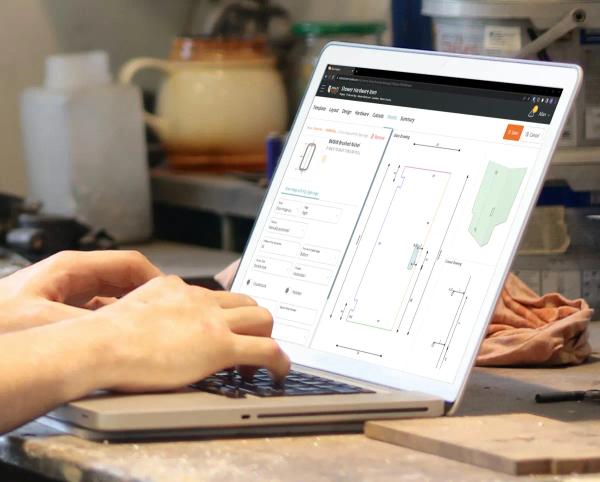5 steps to prepare your glazing business for the future
23 March 2017
5 steps to prepare your glazing business for the future
Future-proof
adj. something that is future-proof will not stop being used because it has been replaced by something newer and more effective (Macmillan Dictionary)
Calling all glazing business owners and managers — how prepared is your business for the future? Do you have systems and processes in place? Is business-critical information documented and available to the whole company, or does it exist in the heads of one or two people? Is innovation part of your company culture?
Today we're talking future-proofing in all senses of the word:
- Reducing reliance on one or two key brains (a common affliction in smaller businesses)
- The importance of documented processes, standardized and centralized information
- Keeping up with industry developments and changing customer expectations
1. Whatever you're doing, write it down
Whether your business processes are automated, manual, or somewhere in between, document how things get done. Once you've got it on record, get another pair of eyes to take a look and check that it a) makes sense, b) is an accurate reflection of what the business is doing.
Points to include:
- What triggers the process to start, when does it end, and how do you move through the step in between?
- What is the required input (cost, time, materials) and what is the desired output?
- Define roles: who is doing what at each stage? Who are the decision makers?
Inefficiencies and risk can drive an otherwise great business into the ground, so treat this as an exercise in finding areas to improve. Also remember to treat your process as a living document, put reminders in your calendar on a regular basis to review it and ensure it's still up-to-date.
If you're a visual person, you may find mindmapping tools like MindMeister or Coggle useful.
2. Spring clean, standardize, then centralize
Now you've got your processes written down, let's turn our attention to data: what you've got, how it's organized, and where it's stored.
Why bother? Saving everything on your desktop might work for you, but it makes it hard for anyone else to find information, and causes headaches when it comes to backing up data. Depending on the state of your filing system, a spring clean can be a massive job but it's an excellent feeling when you're done!
Kick start your clean up:
- Remove duplicate or old versions of files
- Set up a file naming system to make finding documents that much easier - take a look at Getting Organized: Great Tips for Better File Names (PCMag.com)
- Most importantly, once you've got your system in place, use it. Take an extra few seconds to save documents in the right place, and save hours of wasted time searching for files later on.
You've packed everything in boxes, labelled them, now it's time to move them into the new house. If your key business information is stored on a desktop computer, and it breaks, then what? Wherever possible, use cloud versions of desktop software. If you're using Microsoft Office installed on your computer, consider switching to Microsoft Office 365 and storing your files on Microsoft's OneDrive. Not only will this protect you if your PC gives up the ghost, it makes it much easier to access and edit documents on the go.
Of course this extends beyond document editing, it's particularly important that your accounting software is backed up. See QuickBook's case for online vs. desktop.
3. Keep your finger on the pulse
Once you've got your information in order, turn your attention to the future. Always keep an eye on what is happening in the glazing universe so you're prepared to react to it. Whether it's new technology, shifting customer expectations or any number of other developments that could impact your business.
Subscribe to glazing magazines from both your area and overseas, and set up Google Alerts on particular topics of interest, that way you'll get the latest news delivered straight to your inbox.
4. Encourage innovation
'If it ain't broke, don't fix it' as the saying goes. It's easy to get comfortable and do things the way they've always been done but you could be missing out on some great ideas, sitting in the minds of employees who may not feel comfortable sharing them. Create an environment where innovation is part of company culture. A few ideas to get started:
- Encourage your team to go to local business talks and networking events. They may pick up different ideas to what someone in management would pick up on.
- Don't shut down an idea right off that bat. Trial it in the business where possible, and remember that employees won't volunteer ideas if they're afraid of backlash. AllBusiness.com call this: "Model and promote fearless behavior."
- Reward good ideas to encourage further innovation.
Innovation doesn't have to mean changing what you deliver, it may mean making changes to how you deliver. Here's a great article from Bloomberg about how Domino's Pizza did just that.
5. Beware Millennial Mike
Let's turn our attention to an example of a young upstart glazier, we'll call him 'Mike'. Mike is a millennial, he started his glazing apprenticeship when he was 18 years old, and took three years to complete it.
- Mike was born in 1996, the year that the US Government started a program encouraging schools to make computers available to every student.
- When Mike was 10, Facebook was opened to users worldwide.
- Mike probably never had a black and white Nokia or a even a flip phone — the first iPhone was released when he was 11.
Mike grew up with technology and is confident using it to communicate, purchase goods and services, manage his money and more. When Mike branches out on his own as a glazier, you can bet he'll have a website up and running, be showing off his work on social media, and researching software to help him run his business within a a few weeks.
There's a wealth of wisdom and experience in your business that the Millennial Mikes of the world can't compete with. But if prospective customers are finding Mike first, it's you who loses out. Invest in your digital presence, particularly:
- An easy to use, informative and engaging website (check out our 5 Things you must have on your glazing website).
- People often search for information on their phone first, then do deeper research on their computer. It's important your site is easy to navigate on a phone.
- An up-to-date social media presence that makes it easy for customers to find and communicate with you (try: An introduction to using Facebook Pages for your glazing business).
- A seamless and professional quoting-invoicing-payment experience.
We hope you've found some useful ideas in here about how to take your glazing business forward into the future by reducing risk and encouraging innovation. We'd love to hear your ideas about how your future-proofing your business!
Related Blogs
26 January 2024
Why Fabricators need a Glass E-commerce Platform
Going digital isn't just a tech trend—it's a game-changer and could be for your business as well. Let's dive into why introducing an E-commerce portal is a smart move for your glass fabrication business by considering the pros & cons and how Smart Glazier Software can help navigate you into the digital age.
28 October 2023
Smart Glazier Software set to shine at GlassBuild 2023
2023 has been a huge year for us here at Smart Glazier Software, and we're excited to head into GlassBuild America this year and take part in the most significant event in the Glass Industry across the Western Hemisphere.
05 October 2023
Our Transformation: Becoming Smart Glazier Software
On August 1, 2023, a significant transformation took place as Smart-Builder evolved into Smart Glazier Software. Dive into our blog to discover the motivations behind this rebrand and the implications it holds for our organization.



